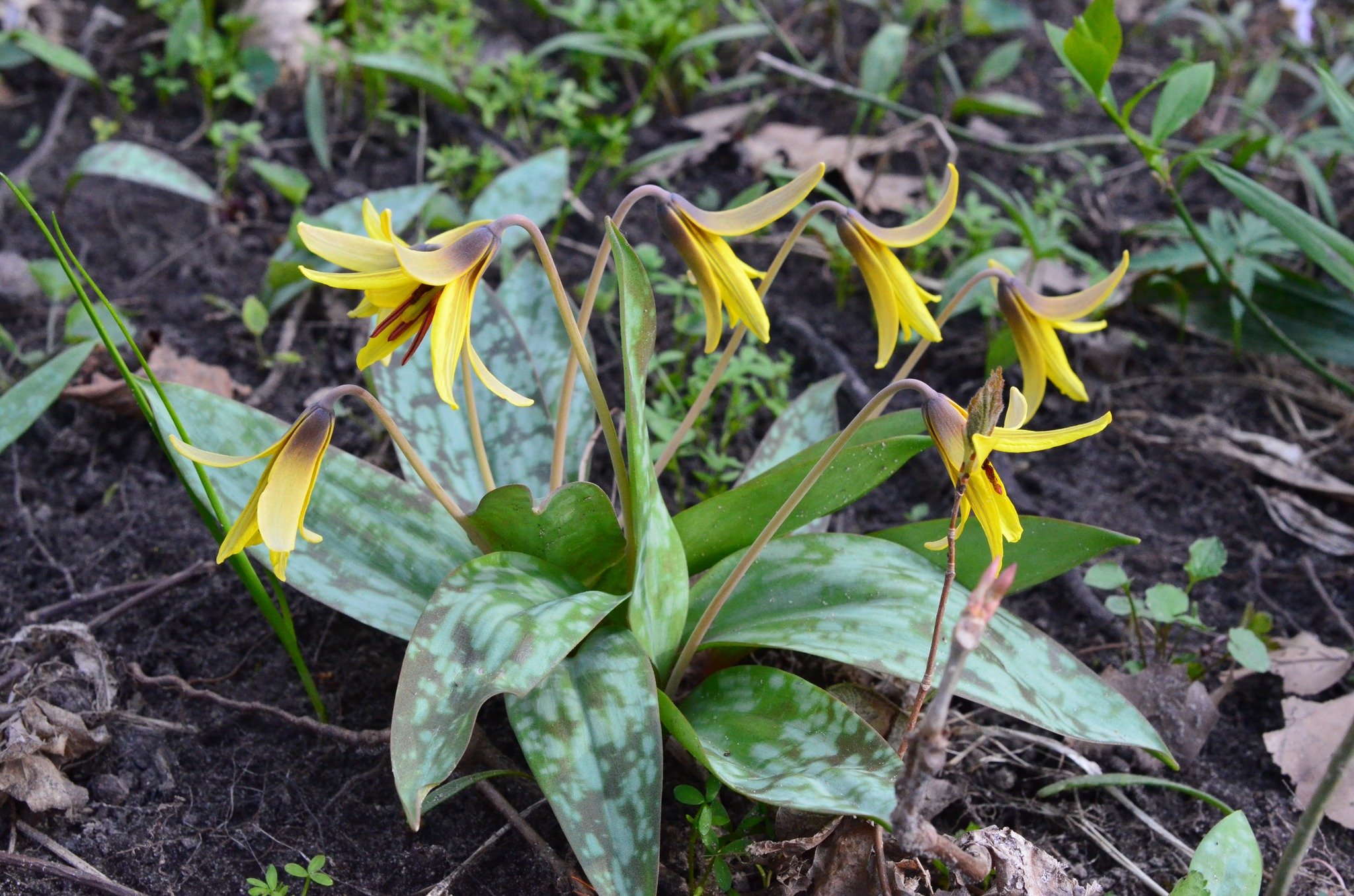Meet Your Neighbors: Spring Ephemeral Flowers
Eli Wolper: 3/5/24
If you've been out and about recently- maybe on a walk through your neighborhood or through a local park, you may have seen small white flowering plants -known as snowdrops- around the edges of flowerbeds or on roadsides. Or you have seen the more eye-catching and familiar crocuses, blooming as happily where they have been intentionally planted as in the middle of a patch of grass where they have migrated to. We are still a month or so away from tulips, daffodils, and hyacinths coming into season (dependent on Erie’s Notoriously Fickle Weather). All these common spring flowers have something in common, something also shared with many native plants. They are what are known as ephemeral flowers.
Spring ephemeral flowers are not a closely related family or order of plants, but rather a group of plants fitting into a common ecological niche. They spend the bulk of the year in dormancy. Most have a rhizome, tuber, or bulb where sugars and starches produced during their brief active period are stored. When weather is warm enough in early spring, before trees of the canopy and understory of forests begin leafing out, and before taller grasses and shrubs shade them out in more open areas, spring ephemerals use their stored nutrients to spring to life. Flowers bloom for a short period, their nectar serving as an early meal for awakening pollinators. When finished blooming, the focus becomes collecting and storing sugars for the next spring. As trees leaf out, the foliage of spring ephemerals wither, and the plants return to dormancy- to await their next chance at color and sunlight.
A personal favorite of mine is the trout lily (Erythronium americanum). Flowers are small, but are a bright, showy yellow, with a similar shape to the flowers as larger Liliaceae cousins like day lilies or Easter lilies. Foliage is mottled- either mostly green with purplish splotches or purplish with green splotches- depending on the amount of sunlight the plant gets. This mottling, which resembles trout skin, and the fact that they typically bloom around the time that trout are running in the local streams are where trout lilies draw their name from. They prefer to grow in rich, hummus soil and prefer full to partial shade. Some of the best places to see these flowers in our area are Presque Isle and Erie Bluffs State Parks, and Asbury Woods. Keep an eye out for them on your next hike as spring progresses.
References
Missouri Botanical Garden. (n.d.). Erythronium americanum - Plant Finder. Missouri Botanical Garden. Retrieved March 5, 2024, from https://www.missouribotanicalgarden.org/.../PlantFinderDe...
Image Credit: Photo by Mttswa, used under a Creative Commons Attribution 4.0 International License, sourced from: https://commons.wikimedia.org/.../File:Erythronium...

